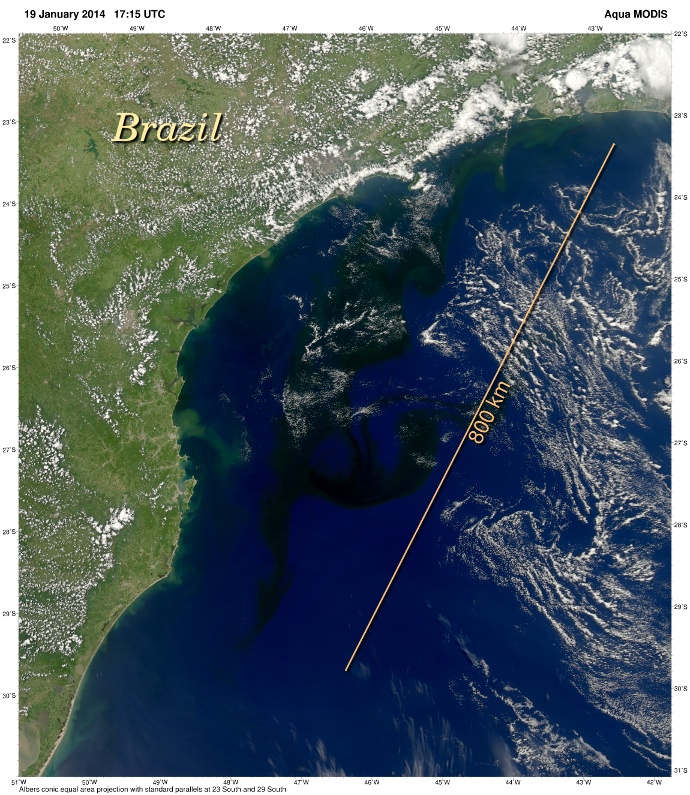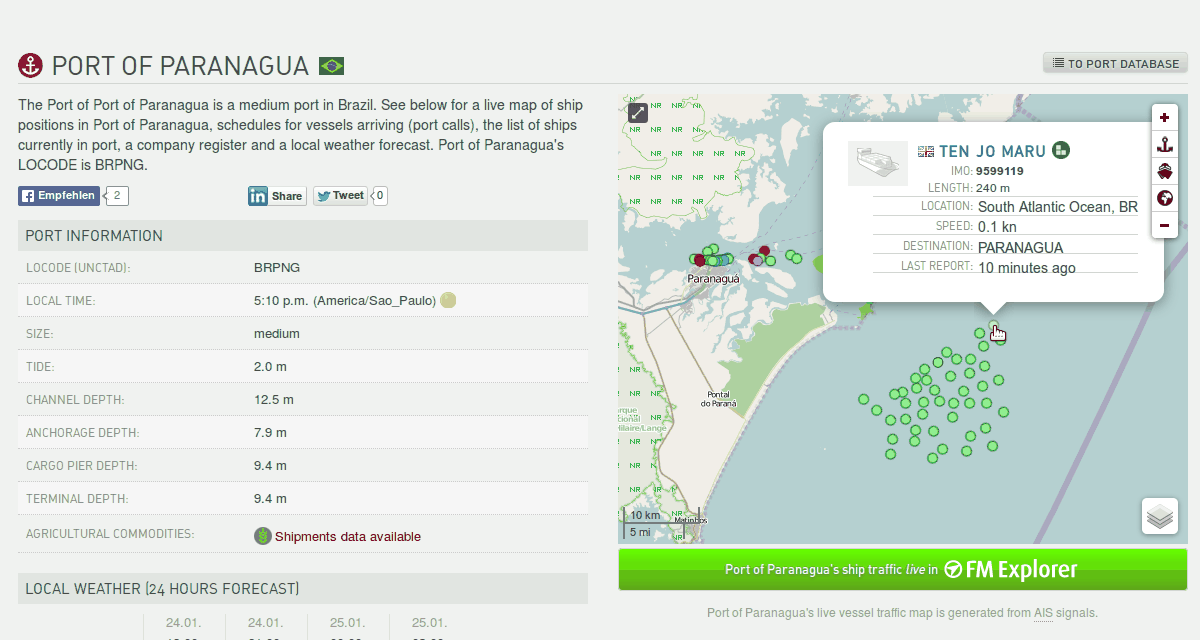The MODIS image below shows a long plume of dark water extending
some 800 kilometers to the south by southwest of Rio de Janeiro,
Brazil -- first crossing and then roughly following the outer
edge of the continental shelf. Recent surface samples indicate
that this is a bloom of the fast-swimming ciliate,
Myrionecta rubra,
which is known to form
recurring large blooms
in some parts of the world and has an
interesting life style.
The above Aqua-MODIS image was collected on
January 19, 2014.

While looking at the
full-resolution
(i.e. formed from bands
having 250- and 500-meter wide pixels) version of the above image,
my eye was attracted to a cluster of light spots just offshore
of the Brazilian port city of Paranaguá, and I wondered
what those could be. Small islands in the region look that way,
but islands are not usually arranged in such a regular pattern,
and there are no islands in that particular patch of ocean.
A quick internet search revealed
the
answer.
The regular spots on the image below are ships waiting to use the port
facilities at Paranaguá. The ships all have lengths of 200 meters
give or take a few tens of meters, and they are relatively bright with
respect to the surrounding ocean, so they reflect enough photons back
to the MODIS sensor to significantly increase the signal for even a
detector in one of the 500-meter bands of the instrument.
The next image down the page is a screenshot of the fleet-monitoring web site
referenced above and it shows a similar distribution of ships a few days
after the MODIS image was collected.




